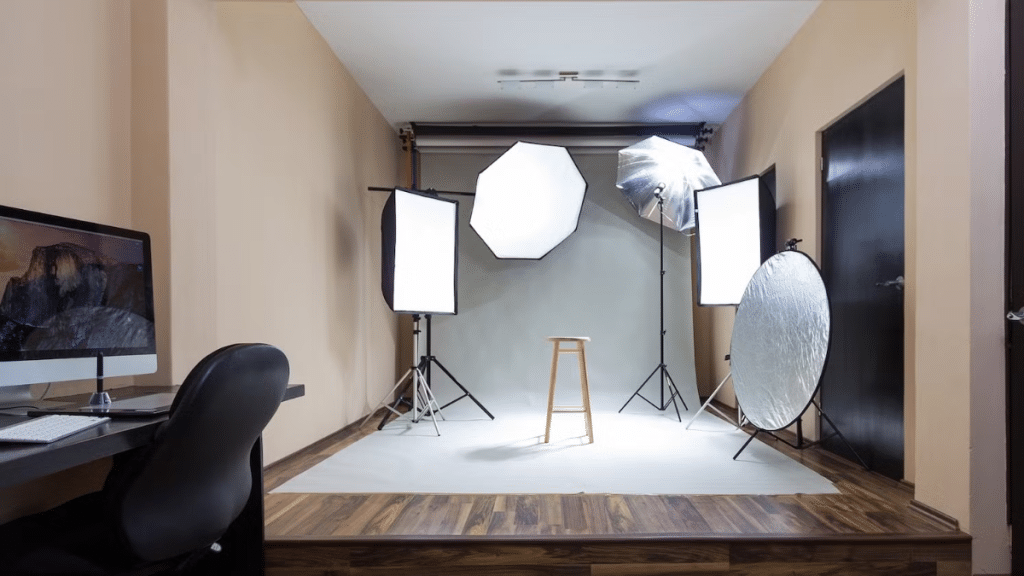Lighting isn’t just about visibility—it’s about storytelling. Whether you’re working on a photo shoot, filming a video, or applying makeup for a tutorial, studio lighting can determine how your final product feels and how it’s perceived. When used intentionally, lighting elevates the work; when ignored, it can overshadow even the most creative vision.
Let’s dive into ten important aspects that highlight how studio lighting can shape the outcome of your project—for better or worse.
1. Setting the Mood and Tone
Lighting establishes the emotional atmosphere of your scene. Soft, warm lighting can create a romantic or nostalgic feel, while harsh, cool lighting might evoke tension or seriousness. Think about horror films versus dreamy wedding shoots—each uses lighting as a key tool to evoke emotion and set the tone.
2. Consistency and Professionalism
One of the biggest giveaways of an amateur setup is inconsistent lighting. Uneven lighting, flickering, or odd color temperatures can make a video or image look disjointed. Professional lighting ensures even exposure, smooth transitions, and consistency throughout the shoot.
To explore quality gear that provides reliable output and color balance, the Studio Lights Collection offers a variety of options tailored for content creators, photographers, and stylists aiming for professional results.
3. Highlighting Key Elements
The right lighting can guide a viewer’s eye to where you want their attention. In photography, lighting highlights subjects, textures, or shapes. In makeup or beauty videos, ring lights emphasize facial features without harsh shadows. Lighting isn’t just functional—it’s directional and communicative.
4. Reducing Post-Production Hassles
Good lighting minimizes the need for heavy editing. When shadows fall just right and skin tones appear true-to-life, editing becomes more about enhancement than correction. Poor lighting, on the other hand, might require hours of color correction or retouching—if the footage can be salvaged at all.
5. Defining Texture and Detail
Studio lighting enhances the depth and dimension of your subject. In product photography or close-up beauty shots, directional lighting reveals surface details—like skin texture, fabric weaves, or product contours—that are often lost in flat, ambient light. This clarity builds authenticity and trust in what’s being shown.
6. Creating Depth and Space
Lighting adds a sense of three-dimensionality. By manipulating shadows and highlights, you can simulate space in a two-dimensional frame. Using a key light and a fill light, for instance, gives your subject separation from the background, making the shot feel less like a flat image and more like a real environment.
7. Complementing Natural Light
In many setups, natural and studio lighting coexist. Studio lights can act as a supplement—filling in shadows from a window or balancing out uneven daylight. Understanding how to blend artificial and natural sources allows you to maintain a consistent look, even as the sun shifts throughout the day.
8. Minimizing Shadows and Glare
Without careful setup, lighting can produce unwanted shadows, harsh reflections, or glare. In video production or livestreaming, this becomes especially distracting. Diffusers, softboxes, and proper angles can soften the light and avoid issues like shiny skin or blown-out highlights.
9. Enhancing Color Accuracy
Inaccurate lighting can distort color—an issue that’s especially crucial in industries like fashion, design, and beauty. Color temperature and CRI (Color Rendering Index) are essential considerations. Proper studio lighting ensures that what you see through the lens closely matches real life.
10. Boosting Confidence and Focus
Finally, never underestimate the psychological impact of good lighting. Creators, models, and clients alike feel more confident under flattering, soft lighting. It can ease nerves during shoots, improve engagement in virtual meetings, and help people feel camera-ready. Good lighting isn’t just technical—it’s emotional.
Final Thoughts
Lighting is more than a technical necessity—it’s part of the creative process. Whether you’re filming a beauty tutorial, photographing products, or designing a workspace, thoughtful studio lighting helps you communicate clearly and create with intention. The right setup doesn’t just illuminate—it transforms.
So next time you’re setting up your space, think of lighting not as an afterthought, but as one of your most powerful tools. Because in the world of content creation, lighting can truly make or break your project.

